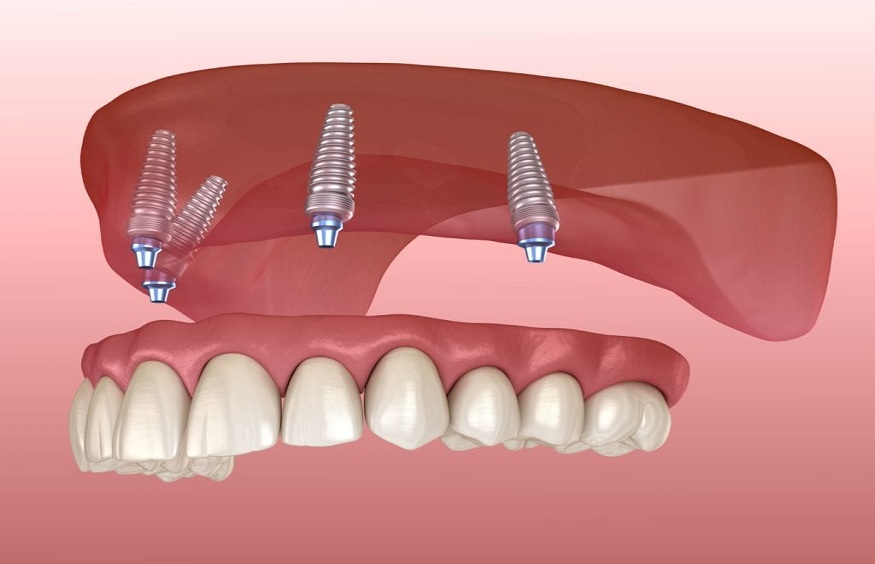It is an acrylic prosthetic structure with an extended cupping base (palace) and a series of metal hooks that will serve to hold it to the adjacent teeth. As its name suggests, it is to be removed and put on. Over time, between five dental prosthesis? and seven years, it loosens both in the gums and in the hooks that hold the prosthesis. Its great disadvantage when chewing is that it can move and sway, as well as food that can penetrate under the palate.
What is a fixed dental prosthesis?
A fixed prosthesis is a prosthetic restoration that involves replacing missing teeth with a prosthetic structure that attaches to adjacent teeth. These teeth are ground down to make room for the framework, and the denture is cemented to secure it. It is a type of design that has been used for almost a century, and its chewing comfort is excellent. The main disadvantage is that healthy teeth must be sacrificed to repair missing teeth.
What is a dental implant?
This is a titanium screw that is placed into the bone of the maxilla or mandible and acts as an artificial root. A covering is placed over this root that mimics the color and shape of the person’s natural teeth. It can be done on a single tooth or on several, even on an entire jaw or on the entire mouth. The sensation when chewing is closest to natural teeth, surpassing the comfort of the removable prosthesis, and sometimes the fixed bridge.
Materials . Dentures are usually made of acrylic, resin and ceramic materials, so they are lightweight and affect the natural teeth to which they are attached as little as possible. Implants are usually made of titanium, a material that is highly biocompatible, chemically resistant, and lightweight. In addition, after a few months, the titanium allows the bone to grow around it, which is called osseointegration. The material of the prosthesis on the implants can be zirconium, titanium, palladium-gold and chromium-cobalt.
aesthetic . From an aesthetic point of view, both a fixed prosthesis and an implant meet the patient’s aesthetic requirements very well, even if advances in implantology techniques and materials make the latter look more like natural teeth.
Functionality . On a functional level, implants respond much better than prostheses, since they do not move or risk falling, they are firmer and safer. Additionally, with immediate loading implantology, the patient can eat, drink and lead a normal life in just one day.
Adaptation . Generally, denture patients require a longer adaptation time than implant patients. Implants feel and function like natural teeth, while dentures are a foreign body that takes some getting used to. Although each case is different, since it will largely depend on the anatomical conditions of the bone and the person’s ability to adapt to the change.
Independence . The implants are placed directly on the bone, so they do not depend on adjacent teeth, overload them or affect them in any way. Instead, dentures are attached to adjacent teeth, limiting the number of teeth that can be replaced on the one hand, and requiring healthy, pristine teeth on the other.
Duration . Both procedures require adequate follow-up and maintenance , such as good dental hygiene and regular check-ups. In the best conditions, a prosthesis lasts between eight and twelve years, while implants can last a lifetime, if properly maintained.
Therefore, it is not surprising that in most cases the dental implant is recommended instead of the denture or bridge.

